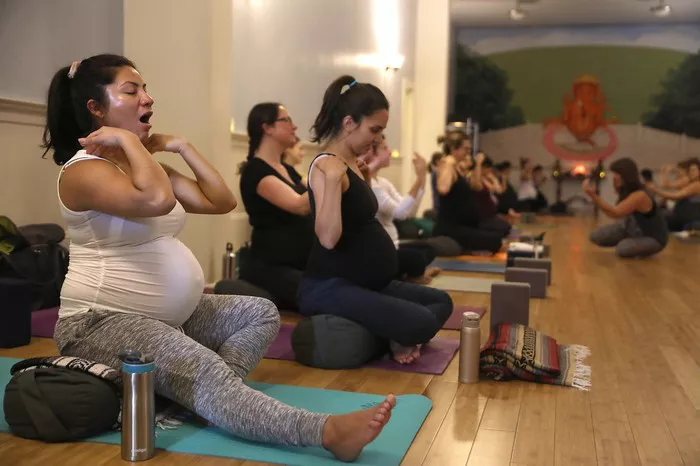When it comes to fitness, the options seem endless. Among the myriad of choices, two popular contenders often stand out: Power Yoga and hitting the gym. Both offer unique approaches to achieving physical health and mental well-being. But which one is better suited for you? Let’s delve into the nuances of Power Yoga versus traditional gym workouts to help you make an informed decision.
1. Understanding Power Yoga:
Power Yoga is a dynamic and vigorous form of yoga that combines breath control, strength, flexibility, and endurance. It derives its roots from Ashtanga Yoga but with more fluidity and variation in poses. Power Yoga classes typically involve a series of poses performed in rapid succession, often synchronized with breathing techniques. The focus is on building strength, toning muscles, improving flexibility, and enhancing mental clarity.
2. Exploring Gym Workouts:
On the other hand, the gym offers a diverse range of equipment and exercises tailored to individual preferences and fitness goals. From weightlifting and cardio machines to group fitness classes and personal training sessions, the gym provides a comprehensive environment for strength training, cardiovascular conditioning, and overall fitness improvement. Workouts at the gym can be customized based on specific objectives, whether it’s muscle building, weight loss, or endurance enhancement.
3. Goals and Objectives:
The choice between Power Yoga and the gym often boils down to your fitness goals and personal preferences. If you’re looking to improve flexibility, balance, and mental focus while toning muscles and burning calories, Power Yoga could be an excellent choice. On the other hand, if your primary aim is to build muscle mass, increase strength, or engage in high-intensity interval training (HIIT), the gym might be more suitable.
4. Time and Convenience:
Consider your schedule and lifestyle when deciding between Power Yoga and gym workouts. Power Yoga classes typically range from 60 to 90 minutes, including warm-up, poses, and cool-down, making it a time-efficient option for those with busy schedules. Additionally, you can practice Power Yoga at home using online tutorials or mobile apps, providing flexibility in terms of timing and location. In contrast, gym sessions may require more time commitment, especially if you incorporate travel time and waiting for equipment during peak hours.
5. Physical Impact and Injury Risk:
Both Power Yoga and gym workouts have their share of physical benefits and potential risks. Power Yoga emphasizes controlled movements and proper alignment to reduce the risk of injury, but as with any physical activity, overexertion or improper technique can lead to strains or sprains, particularly for beginners. In the gym, the risk of injury may vary depending on the type of exercises performed, equipment used, and supervision available. Proper form, gradual progression, and listening to your body are essential to minimize the risk of injury in both settings.
6. Mental and Emotional Well-being:
Beyond physical fitness, both Power Yoga and gym workouts offer mental and emotional benefits. Power Yoga incorporates mindfulness and breath awareness, promoting relaxation, stress reduction, and improved mood. The meditative aspects of yoga can help alleviate anxiety, depression, and mental fatigue. Similarly, engaging in regular gym workouts releases endorphins, the body’s natural mood lifters, contributing to a sense of well-being and stress relief. Ultimately, choosing between Power Yoga and the gym may depend on which activity resonates more with your mental and emotional needs.
7. Community and Support:
Consider the social aspect of your fitness routine when deciding between Power Yoga and the gym. Yoga classes often foster a sense of community and camaraderie among participants, creating a supportive environment for personal growth and self-discovery. In contrast, the gym offers opportunities for social interaction through group fitness classes, personal training sessions, or workout buddies. Surrounding yourself with like-minded individuals can enhance motivation, accountability, and enjoyment in either setting.
8. Cost Considerations:
Budgetary constraints may influence your decision between Power Yoga and gym memberships. Power Yoga classes typically require a fee per session or monthly membership at yoga studios or fitness centers. However, practicing at home using online resources can be a more cost-effective alternative. Gym memberships vary widely in price depending on the facilities, location, and amenities offered. Some gyms may require additional fees for access to specialized equipment, classes, or personal training services. Evaluate your financial resources and priorities to determine the most cost-effective option for your fitness journey.
9. Long-Term Sustainability:
Ultimately, the best fitness regimen is one that you can sustain long-term. Consider the enjoyment factor, variety, and adaptability of your chosen exercise routine. If you find joy and fulfillment in Power Yoga’s mind-body connection and holistic approach to fitness, it may become a lifelong practice. Conversely, if you thrive on the diversity and progression offered by gym workouts, you’re more likely to stick with your fitness goals over time. Experiment with different activities, listen to your body, and make adjustments as needed to maintain a sustainable and fulfilling fitness routine.
Conclusion
In the debate between Power Yoga and gym workouts, there is no one-size-fits-all answer. Both offer unique advantages and cater to different preferences, goals, and lifestyles. Whether you prefer the meditative flow of Power Yoga or the dynamic environment of the gym, the key is to find an exercise regimen that aligns with your needs, interests, and long-term sustainability. Ultimately, the best workout is the one that keeps you motivated, engaged, and committed to your journey toward optimal health and well-being.

















